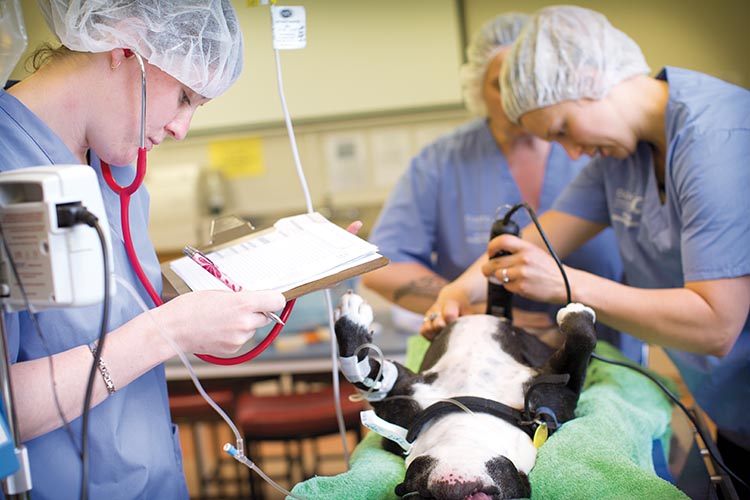Punctuation
Punctuation marks provide visual clues to readers, telling them how they should read the sentence. Punctuation marks tell you not only when a sentence ends but also what kind of sentence you have read.
Apostrophes
Whilst it is important to understand the function of contractions, their use is not usually appropriate in academic writing.
Contractions
I can't swim
When contractions are used, the apostrophe replaces the letter or letters that were removed to make a shorter word:
do not becomes don't
The apostrophe replaces the missing letter, in this case the o.
Further examples are:
|
aren’t |
are not |
|
can’t |
cannot |
|
doesn’t |
does not |
|
don’t |
do not |
|
isn’t |
is not |
|
he’ll |
he will |
|
I’ll |
I will |
|
she’ll |
she will |
|
they’ll |
they will |
|
you’ll |
you will |
|
it’s |
it is, it has |
|
let’s |
let us |
|
she’s |
she is, she has |
|
there’s |
there is, there has |
|
who’s |
who is, who has |
Ownership
This is John's book.
Apostrophes are also used to show ownership - they make a word possessive. To make a word possessive follow the three simple rules given below.
The three simple rules
the student's books - meaning the books belonging to the student.
Further examples are:
the boss's armchair
the government's legislation.
women's rights - meaning the rights of women.
Further examples are:
children's playground - meaning the playground for children
men's changing rooms - meaning the changing rooms for men
the students' library books - meaning the books belonging to the students
Further examples are:
the ladies' football league
the workers' rights.
Common problems in using apostrophes
The apostrophe is frequently misused. Words that cause particular problems are: its / it's and whose / who's.
Apostrophes problems
| Use its when you want to show possession. Its belongs to a group of words that are already possessive. Other examples are: it is hers; it is yours. These words are already possessive; they do not need apostrophes to indicate possession. | The government abandoned its policy. |
| It's is a contraction of it is. The apostrophe replaces the missing i. Use it's when you want to shorten it is. | It's a nice day. |
| Use whose when you want to show possession. Whose belongs to the same group of possessive words as its. It does not need an apostrophe to denote possession. | the student whose notes I borrowed. |
|
Use who's when you want to shorten who is. Who's is a contraction of who is. The apostrophe replaces the missing i. |
the student who's coming to visit. |
Tip
Just because a word ends in s, it does not mean it needs an apostrophe! An apostrophe is added to show possession or to replace a missing letter or letters in contractions. If you are unsure when to use an apostrophe, check your use of the apostrophe falls under one of the rules outlined in this guide.

Brackets, Dashes & Hyphens
Brackets ( )
Brackets (also known as Parentheses) are punctuation marks that are always used in pairs and contain material that is secondary to the meaning of a sentence. Brackets must never contain the subject or verb of a sentence. A sentence should make sense if you delete any text within the brackets.
Attack of the Killer Potatoes has to be the worst movie I have seen (so far).
Your spinach and garlic salad is one of the most delicious (and nutritious) foods I have ever tasted!
Dashes
A dash (—) is a punctuation mark used to set off information in a sentence for emphasis. You can enclose text between two dashes, or use just one dash. To create a dash in Microsoft Word, type two hyphens together. Do not put a space between dashes and text.
Arrive to the interview early—but not too early.
Any of the suits—except for the purple one—should be fine to wear.
Hyphens
A hyphen (-) looks similar to a dash but is shorter and used in different ways.
Hyphens between two or more adjectives that work together
Use a hyphen to combine words that work together to form a single description.
The fifty-five-year-old athlete was just as qualified for the marathon as his younger opponents.
My doctor recommended against taking the medication, since it can be habit-forming.
My study group focused on preparing for the mid-year review.
Hyphens when a word breaks at the end of a line
Use a hyphen to divide a word across two lines of text. You may notice that most word-processing programs will do this for you. If you have to manually insert a hyphen, place the hyphen between two syllables. If you are unsure of where to place the hyphen, consult a dictionary or move the entire word to the next line.
My supervisor was concerned that the team meet-
ing would conflict with the client meeting.

Colons (:)
The colon (:) is another punctuation mark used to indicate a full stop. Use a colon to introduce lists, quotes, examples, and explanations.
Colons to introduce a list
Use a colon to introduce a list of items. Introduce the list with an independent clause.
The team will tour three states: New York, Pennsylvania, and Maryland.
I have to take four classes this semester: Composition, Statistics, Ethics, and Italian.
Colons to introduce a quote
You can use a colon to introduce a quote.
Mark Twain said it best: “When in doubt, tell the truth.”
If a quote is longer than forty words, skip a line after the colon and indent the left margin of the quote five spaces. Because quotations longer than forty words use line spacing and indentation to indicate a quote, quotation marks are not necessary.
My father always loved Mark Twain’s words:
There are basically two types of people. People who accomplish things, and people who claim to have accomplished things. The first group is less crowded.
Colons to introduce examples or explanations
Use a colon to introduce an example or to further explain an idea presented in the first part of a sentence. The first part of the sentence must always be an independent clause; that is, it must stand alone as a complete thought with a subject and verb. Do not use a colon after phrases like such as or for example.
Correct:
Our company offers many publishing services: writing, editing, and reviewing.
Incorrect:
Our company offers many publishing services, such as: writing, editing, and reviewing.
Colon after the greeting in business letters and memos
Dear Hiring Manager:
To: Human Resources
From: Deanna Dean
When to capitalise the first letter
Capitalise the first letter following a colon for a proper noun, the beginning of a quote, or the first letter of another independent clause. Do NOT capitalise if the information following the colon is not a complete sentence.
Proper noun: We visited three countries: Belize, Honduras, and El Salvador.
Beginning of a quote: My mother loved this line from Hamlet: “To thine own self be true.”
Two independent clauses: There are drawbacks to modern technology: My brother’s cell phone died and he lost a lot of phone numbers.
Incorrect: The recipe is simple: Tomato, basil, and avocado.
Practise colon use with more interactive exercises:

Commas
One of the punctuation clues to reading you may encounter is the comma. The comma is a punctuation mark that indicates a pause in a sentence or a separation of things in a list. Commas can be used in a variety of ways.
Commas after an introductory word or phrase
Personally, I think the practice is helpful.
You may notice a comma that appears near the beginning of the sentence, usually after a word or phrase. This comma lets the reader know where the introductory word or phrase ends and the main sentence begins.
Without spoiling the surprise, we need to tell her to save the date.
In this sentence, without spoiling the surprise is an introductory phrase, while we need to tell her to save the date is the main sentence. Notice how they are separated by a comma. When only an introductory word appears in the sentence, a comma also follows the introductory word.
Ironically, she already had plans for that day.
Activity
Look for the introductory word or phrase and add a comma to correct the sentence.
Exercises
Commas in a list of items
When you want to list several nouns in a sentence, you separate each word with a comma. This allows the reader to pause after each item and identify which words are included in the grouping.
The barn, the tool shed, and the back porch were destroyed by the wind.
When you list items in a sentence, put a comma after each noun, then add the word and before the last item. However, you do not need to include a comma after the last item.
We’ll need to get flour, tomatoes, and cheese at the store.
The pizza will be topped with olives, peppers, and pineapple chunks.
Commas and coordinating adjectives
You can use commas to list both adjectives and nouns.
He was tired, hungry, and late.
A string of adjectives that describe a noun are called coordinating adjectives. These adjectives come before the noun they modify and are separated by commas. One important thing to note, however, is that unlike listing nouns, the word and does not always need to be before the last adjective.
It was a bright, windy, clear day.
Our kite glowed red, yellow, and blue in the morning sunlight.

Commas before conjunctions in compound sentences
The bedroom door was closed, so the children knew their mother was asleep.
Commas are sometimes used to separate two independent clauses. The comma comes after the first independent clause and is followed by a conjunction, such as for, and, or but.
He missed class today, and he thinks he will be out tomorrow, too.
He says his fever is gone, but he is still very tired.
Commas before and after interrupting words
I knew where it was hidden, of course, but I wanted them to find it themselves.
In conversations, you might interrupt your train of thought by giving more details about what you are talking about. In a sentence, you might interrupt your train of thought with a word or phrase called interrupting words. Interrupting words can come at the beginning or middle of a sentence. When the interrupting words appear at the beginning of the sentence, a comma appears after the word or phrase.
If you can believe it, people once thought the sun and planets orbited around Earth.
Luckily, some people questioned that theory.
When interrupting words come in the middle of a sentence, they are separated from the rest of the sentence by commas. You can determine where the commas should go by looking for the part of the sentence that is not essential for the sentence to make sense.
An Italian astronomer, Galileo, proved that Earth orbited the sun.

Commas in dates, addresses, and the greetings and closings of letters
The letter was postmarked December 8, 1945.
You also use commas when you write the date, such as in cover letters and e-mails. Commas are used when you write the date, when you include an address, and when you greet someone.
If you are writing out the full date, add a comma after the day and before the year. You do not need to add a comma when you write the month and day or when you write the month and the year. If you need to continue the sentence after you add a date that includes the day and year, add a comma after the end of the date.
The letter is postmarked May 4, 2001.
Her birthday is May 5.
He visited the country in July 2009.
You also use commas when you include addresses and locations. When you include an address in a sentence, be sure to place a comma after the street and after the city. Do not place a comma between the state and the zip code. Like a date, if you need to continue the sentence after adding the address, simply add a comma after the address.
We moved to 37 Hope Street, Pine Hill, Dunedin 9010
After moving to Brooklyn, Wellington, Eric used public transportation to get to work.
More activities
Practise comma use with more interactive exercises:

Quotation marks
Quotation marks (“ ”) set off a group of words from the rest of the text. Use quotation marks to indicate direct quotations of another person’s words or to indicate a title. Quotation marks always appear in pairs.
Direct quotations
A direct quotation is an exact account of what someone said or wrote. To include a direct quotation in your writing, enclose the words in quotation marks. An indirect quotation is a restatement of what someone said or wrote. An indirect quotation does not use the person’s exact words. You do not need to use quotation marks for indirect quotations.
Direct quotation:
Carly said, “I’m not ever going back there again.”
Indirect quotation:
Carly said that she would never go back there.
Punctuating direct quotations
Quotation marks show readers another person’s exact words. Often, you will want to identify who is speaking. You can do this at the beginning, middle, or end of the quote. Notice the use of commas and capitalised words.
Beginning:
Madison said, “Let’s stop at the farmers market to buy some fresh vegetables for dinner.”
Middle:
“Let’s stop at the farmers market,” Madison said, “to buy some fresh vegetables for dinner.”
End:
“Let’s stop at the farmers market to buy some fresh vegetables for dinner,” Madison said.
Speaker not identified:
“Let’s stop at the farmers market to buy some fresh vegetables for dinner.”
Always capitalise the first letter of a quote even if it is not the beginning of the sentence. When using identifying words in the middle of the quote, the beginning of the second part of the quote does not need to be capitalised.
Use commas between identifying words and quotes. Quotation marks must be placed after commas and periods. Place quotation marks after question marks and exclamation points only if the question or exclamation is part of the quoted text.
Question is part of quoted text:
The new employee asked, “When is lunch?”
Question is not part of quoted text:
Did you hear her say you were “the next Picasso”?
Exclamation is part of quoted text:
My supervisor beamed, “Thanks for all of your hard work!”
Exclamation is not part of quoted text:
He said I “single-handedly saved the company thousands of dollars”!
Quotations within quotations
Use single quotation marks (‘ ’) to show a quotation within in a quotation.
Theresa said, “I wanted to take my dog to the festival, but the man at the gate said, ‘No dogs allowed.’”
“When you say, ‘I can’t help it,’ what exactly does that mean?”
“The instructions say, ‘Tighten the screws one at a time.’”
Titles
Use quotation marks around titles of short works of writing, such as essays, songs, poems, short stories, and chapters in books. Usually, titles of longer works, such as books, magazines, albums, newspapers, and novels, are italicised.
“Annabelle Lee” is one of my favorite romantic poems.
The New York Times has been in publication since 1851.
Semicolon (;)
Like most punctuation marks, the semicolon can be used in a variety of ways. The semicolon indicates a break in the flow of a sentence, but functions differently than a period or a comma. When you encounter a semicolon while reading aloud, this represents a good place to pause and take a breath.
Semicolons to join two independent clauses
Use a semicolon to combine two closely related independent clauses. Relying on a period to separate the related clauses into two shorter sentences could lead to choppy writing. Using a comma would create an awkward run-on sentence.
Correct:
Be sure to wear clean, well-pressed clothes to the interview; appearances are important.
Choppy:
Be sure to wear clean, well-pressed clothes to the interview. Appearances are important.
Incorrect:
Be sure to wear clean, well-pressed clothes to the interview, appearances are important.
In this case, writing the independent clauses as two sentences separated by a period is correct. However, using a semicolon to combine the clauses can make your writing more interesting by creating a variety of sentence lengths and structures while preserving the flow of ideas.
Semicolons to join items in a list
You can also use a semicolon to join items in a list when the items in the list already require commas. Semicolons help the reader distinguish between items in the list.
Correct:
The color combinations we can choose from are black, white, and grey; green, brown, and black; or red, green, and brown.
Incorrect:
The color combinations we can choose from are black, white, and grey, green, brown, and black, or red, green, and brown.
By using semicolons in this sentence, the reader can easily distinguish between the three sets of colors.
Use semicolons to join two main clauses. Do not use semicolons with coordinating conjunctions such as and, or, and but.

How good is your punctuation?

Suppose you are presenting a speech. If you speak too quickly, your audience will not be able to understand what you are saying. It is important to stop and take a breath a few times as you read from your notes. But how do you know where to pause, where to change your voice, and where to stop? The answer is easy. You can use the punctuation marks you encounter as a guide for your pacing.
Activity
Correct each sentence by adding commas, semicolons, colons, apostrophes, brackets, and hyphens as needed.
Activity
References
Attributions
Hero image: Scrabble letters by Christopher Walkey. Licensed under a Pixabay.com license
Writing for success. The Saylor Foundation. Licensed under a Creative Commons Attribution 3.0 Unported License.




